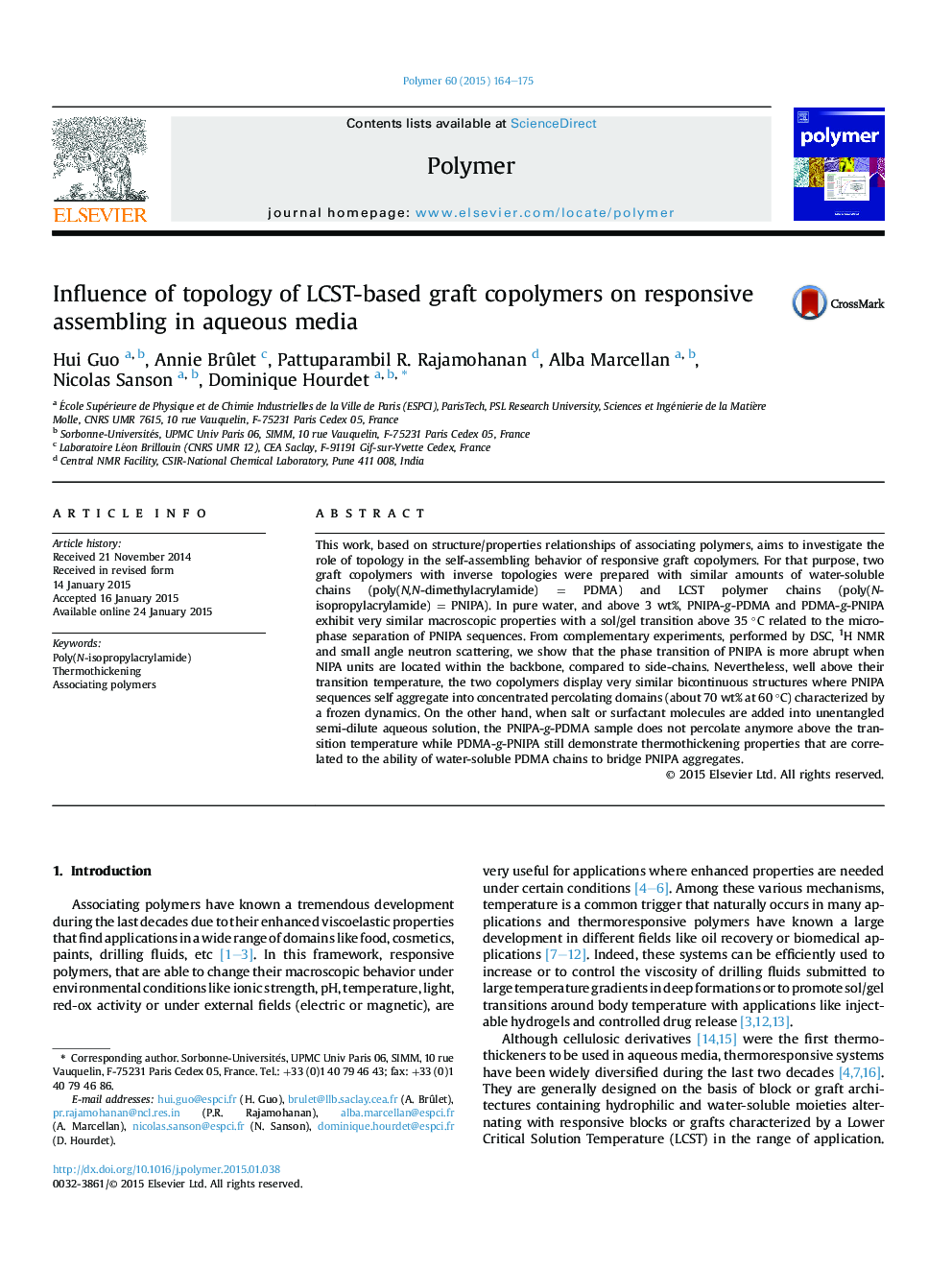| Article ID | Journal | Published Year | Pages | File Type |
|---|---|---|---|---|
| 5180229 | Polymer | 2015 | 12 Pages |
â¢Two LCST-based graft copolymers with inverse topologies were prepared from PNIPA and PDMA.â¢Aqueous solution properties were studied by DSC, NMR, neutron scattering and rheology.â¢The two copolymers undergo similar sol/gel transition upon heating in the entangled regime.â¢Transition is more abrupt when PNIPA is used as backbone (PN-D) instead of grafts (PD-N).â¢When unentangled, PN-D chains do not percolate in the presence of salt or surfactant.
This work, based on structure/properties relationships of associating polymers, aims to investigate the role of topology in the self-assembling behavior of responsive graft copolymers. For that purpose, two graft copolymers with inverse topologies were prepared with similar amounts of water-soluble chains (poly(N,N-dimethylacrylamide) = PDMA) and LCST polymer chains (poly(N-isopropylacrylamide) = PNIPA). In pure water, and above 3 wt%, PNIPA-g-PDMA and PDMA-g-PNIPA exhibit very similar macroscopic properties with a sol/gel transition above 35 °C related to the microphase separation of PNIPA sequences. From complementary experiments, performed by DSC, 1H NMR and small angle neutron scattering, we show that the phase transition of PNIPA is more abrupt when NIPA units are located within the backbone, compared to side-chains. Nevertheless, well above their transition temperature, the two copolymers display very similar bicontinuous structures where PNIPA sequences self aggregate into concentrated percolating domains (about 70 wt% at 60 °C) characterized by a frozen dynamics. On the other hand, when salt or surfactant molecules are added into unentangled semi-dilute aqueous solution, the PNIPA-g-PDMA sample does not percolate anymore above the transition temperature while PDMA-g-PNIPA still demonstrate thermothickening properties that are correlated to the ability of water-soluble PDMA chains to bridge PNIPA aggregates.
Graphical abstractDownload full-size image
